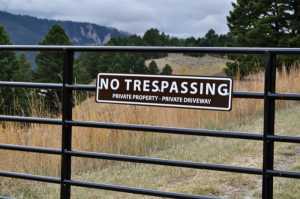I use this forum for a lot of things. I unpack my opinions, and biases, and experiences both exhilarating and mundane onto all of you, and you all willingly play along, which is awfully kind of you. But today, I have to talk about something that is very close to my heart, and of the utmost importance to me. Sometimes this subject can be controversial or even occasionally divisive, but it is important and I think it needs an open debate.
I’m talking about chocolate bars. More specifically, which chocolate bars are the best to eat while sitting on a deer stand. I have particular opinions on this essential deer camp debate, and although this list is not exhaustive, I do think that it covers the chief candidates. By way of a disclaimer this list is regional in that I won’t be able to give an informed deer hunting opinion on American chocolate bars not available up here in The Great White North.
Mr. Big
I’ve always had a dream of shooting a giant buck while I was eating a Mr. Big bar. I could then have a ready-made nickname for my trophy that would also align with the story of how I shot it. To date this has not happened. A Mr. Big has a lot going on, and can thus be distracting in its deliciousness. Caramel, peanuts, and wafer wrapped in chocolate will vie for your attention, maybe giving a wily deer a jump on you while you black out from candy pleasure. It is also just a giant piece of candy, being one of, if not the, largest bar you can buy in Canada. Gets a solid 9 out of 10 from me, and at least one or two should be on your packing list this year.
Mars
Nougat and caramel, wrapped in milk chocolate. Exceedingly delicious and the perfect size, but suffers in cold weather from poor eating characteristics. At temperatures approaching freezing, the nougat and caramel both become hard, congealed, chewy, and messy. Gets a 6 out of 10 from me. Once out of the deer stand however, it can be battered and deep-fried to good effect, but that’s a different story. Pro-tip: On very cold days slip it inside your glove for two minutes before eating it and a lot of the above issues are mitigated.
Caramilk
The bar with ‘the secret’, I prefer Caramilk on stand when I know I’m going to be there a while. The fact that a full size bar is segmented allows for precise rationing, and on cooler days, the bite-size portions can be popped into the mouth and held there for a nice melty/chewy effect. One of my preferred bars year-round, this gets a solid 8 out of 10 on my scale.
Snickers
An old standard, it suffers from some of the same challenges as the Mars Bar, but I also cannot say no to peanuts. If anything I find this bar to be somewhat undersized and I often burn through a supply of them before my week is out, but outside of the Mr. Big bar I find this to be the most filling of treats on offer. On the downside it is a very popular bar in our deer camp and I often think that some of my supply gets mixed up and consumed by someone else. Gets an 8 out of 10.
Coffee Crisp
Nicely shaped, crunchy, and impervious to cold temperatures, this is a simple, consistent treat for those long sits. As the name suggests it has the slightest flavour of coffee which makes for a slight bitterness to offset the sweet chocolate. Also, since I’ve either been in the act of eating one or recently finished one when I’ve shot 75% of the deer on my record, I can only presume that, at least in certain situations deer are attracted to it. Given both it’s pleasing taste and my tendency to prioritize things that are personally significant to me, I give this a 10 out of 10.
Hershey Bar
A solid contender in the colder parts of deer season, being whole milk chocolate and often little else, it has a tendency to melt thoroughly on warmer than usual days, or in the very early season. I was unfortunate enough to have one in my backpack for one of our warmest deer seasons on record and could have quite easily squeezed a liquid Hershey bar out of its wrapper one afternoon. Gets a 7 out of 10 on my scale, bonus points up to 8 out of 10 if it has almonds, and penalty points down to a 5 out of 10 if it is the Cookies & Cream variety.
The real challenge here is that every time I think I have this figured out, someone in deer camp rolls in with another type of chocolate bar to try. So, although I feel fairly confident in the above assessment, as they say, the research is ongoing.

